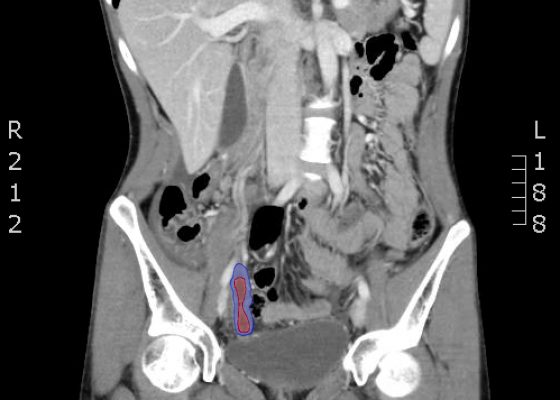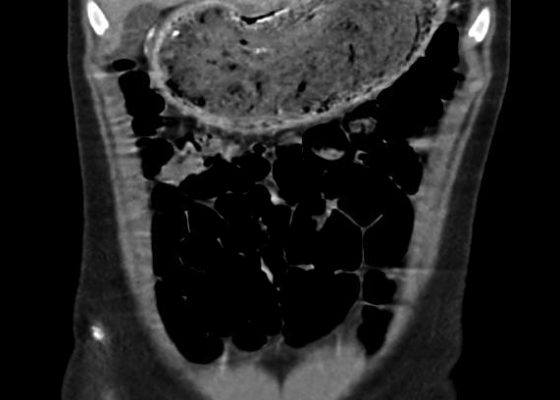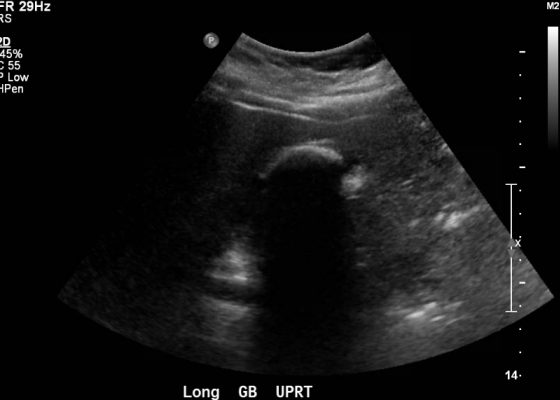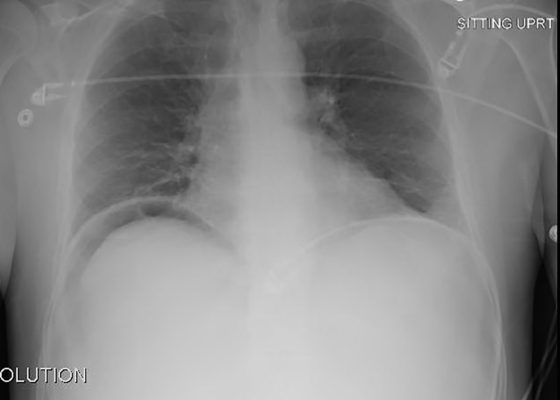Abdominal/Gastroenterology
Novel Emergency Medicine Curriculum Utilizing Self-Directed Learning and the Flipped Classroom Method: Gastrointestinal Emergencies Small Group Module
DOI: https://doi.org/10.21980/J8MS37We aim to teach the presentation and management of GI emergencies through the creation of a flipped classroom design. This unique, innovative curriculum utilizes resources chosen by education faculty and resident learners, study questions, real-life experiences, and small group discussions in place of traditional lectures. In doing so, a goal of the curriculum is to encourage self-directed learning, improve understanding and knowledge retention, and improve the educational experience of our residents.
Ventriculoperitoneal Shunt Migration
DOI: https://doi.org/10.21980/J8G019An immediate post-op abdominal x-ray performed after the patient’s VP shunt revision 30 days prior to this ED visit reveals the VP shunt tip in the mid abdomen. A CT of the abdomen performed on the day of the ED visit reveals the VP shunt tip interposed between the spleen and the diaphragm.
Computed Tomography Diagnosis of Appendicitis
DOI: https://doi.org/10.21980/J8F30NThe CT abdomen/pelvis with IV contrast shows a dilated appendix (see red outline) with thickened, hyperenhancing wall (see blue outline) best visualized in the axial and coronal planes.
Gastric Bezoar
DOI: https://doi.org/10.21980/J85K5WIn the abdominal radiograph, a nonspecific and non-obstructive bowel gas pattern with no air-fluid level was noted, however the stomach was distended with soft tissue. The CT abdomen/pelvis revealed a distended stomach with undigested heterogeneous contents (presumed bezoar).
Cholelithiasis: WES Sign
DOI: https://doi.org/10.21980/J8X300Abdominal ultrasound showed the classic presentation of the Wall-Echo-Shadow (WES) sign. The superficial aspect of the gallbladder wall is represented by a hyperechogenic curve. Below this, bile fluid is represented by hypoechogenicity. Underneath the bile fluid is the echo of the dense border created by the collection of gallstones, represented by a hyperechogenic curve. Due to the high density of the gallstones, nothing deeper can be visualized (including other gallstones or the far end of the gallbladder); this is the shadow.
Perforated Duodenal Ulcer
DOI: https://doi.org/10.21980/J8TG64In the chest radiograph, there was obvious free air under the both the right diaphragm (above the liver) and the left diaphragm, consistent with pneumoperitoneum.
Mesenteric Ischemia
DOI: https://doi.org/10.21980/J8CC7FAt the end of this simulation session, the learner will: 1) Recognize signs and symptoms of mesenteric ischemia; 2) order appropriately imaging and labs in the workup of an elderly patient with abdominal pain; 3) manage a patient with mesenteric ischemia, a rare, but serious cause of abdominal pain in the elderly; 4) discuss anchoring bias, specifically related to patients referred to the ED with an established diagnosis by outside specialists.





